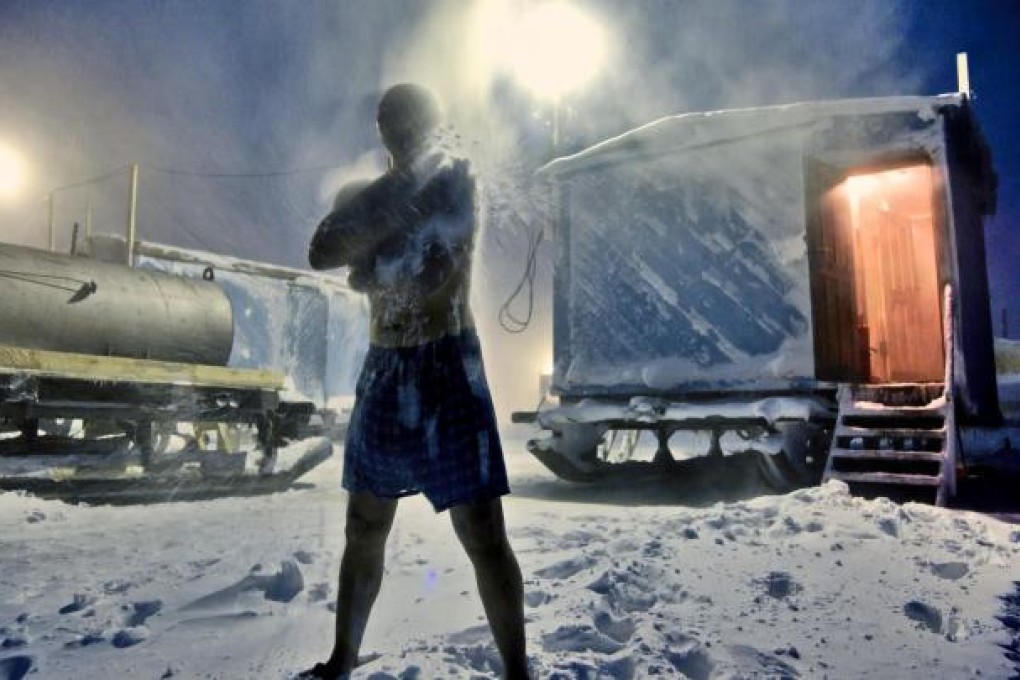Northern exposure
The Russian Arctic is home to reindeer herders, the descendants of gulag inmates and energy-company employees earning top dollar on hardship postings. Welcome to the 'Zone of Absolute Discomfort'. Words and pictures by Justin Jin

Inside the claustrophobic confines of a shipping container erected in the middle of an icy nowhere, a group of Russians wait out another Arctic storm. Anton bakes blinis. Andrei watches a horror movie for the umpteenth time. Alexei tries to craft a toothpaste holder from an empty tin can. Lisa the dog, who finds company among the 100 men in Camp No2, curls up farthest away from the drafty door.
The engineers gathered on this desolate patch of Russian tundra have been hired by a geo-exploration company to look for oil deep below the permafrost. I am waiting out the battering winds with them, to document the international race to secure Arctic resources.
I have made six trips over three years to the Russian Arctic, a 7,000-kilometre-long region stretching atop the planet from Finland to Alaska, upon which Moscow bureaucrats have bestowed the name "Zone of Absolute Discomfort". The icy hinterland is wretched to live in, but just hospitable enough to allow for the extraction of billions of tonnes of resources trapped beneath the permafrost.
Here, three contrasting ways of life, representing three centuries of Russian history, simultaneously tap the Earth's resources amid its harshest conditions: indigenous reindeer herders known as Nenets; descendants of former Soviet prisoners; and energy-company men seeking oil and natural gas.
For hundreds of years, the Russian Arctic was home only to the Nenets. When the Soviet government tried to force these nomads into collective farms, some were settled in apartment blocks, abruptly altering their way of life. Other Nenets defied Soviet edicts and remained on the tundra, raising reindeer for meat and benefiting from an increase in demand for antlers, which are sold as aphrodisiacs in China. These hardy nomads live in (tents) and serve bowls of frozen reindeer brain to guests as a delicacy.
In the far north's urban areas, mounted jet aircraft stand sentry over cities used and abused by the Soviet government, and descendants of Joseph Stalin's prisons populate the streets. The gulags were abandoned in the 1950s, after Stalin's death, but many former inmates chose to stay in the area. The Soviet government built housing blocks and communities for those who worked in the mines, and offered high salaries to attract newcomers. The area boomed, for a while, but the regime scarred the pristine land with no regard for nature or sustainability. Now, pollutants shock the landscape and its inhabitants; in one town, Nikel, sulphur rain kills all vegetation within kilometres of the mine.
